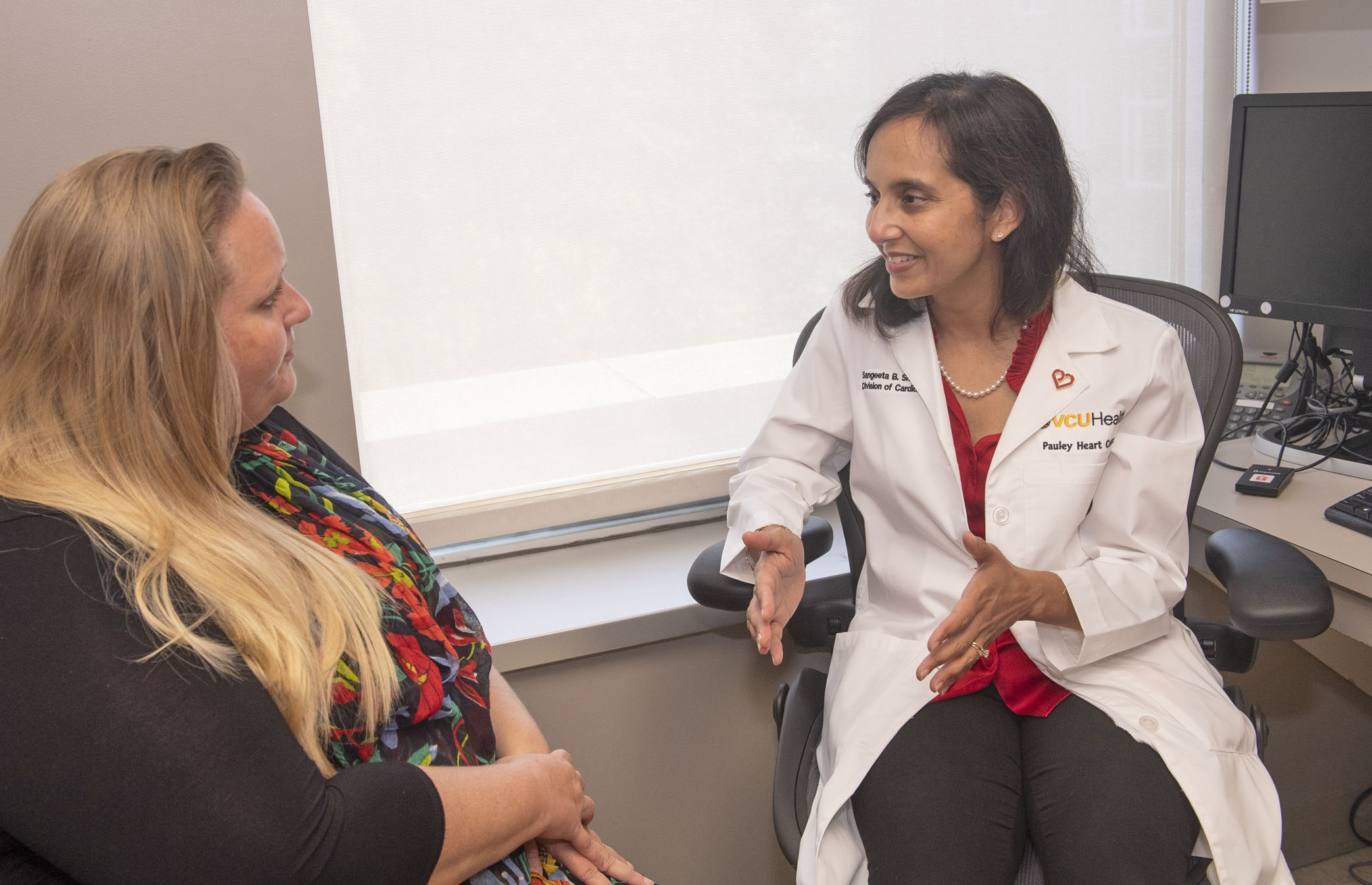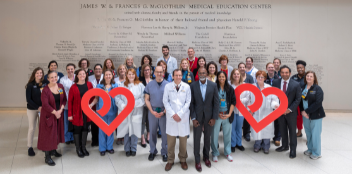Focus on adult congenital heart disease
Sangeeta Shah, M.D., is working toward Virginia’s first accredited adult congenital heart disease program

Dr. Sangeeta Shah (right) meets with a patient.
Adults born with structural defects in the heart must continue to manage their health throughout their lives. Sangeeta Shah, M.D., has dedicated her medical training and career caring for grown-ups who have previously undergone childhood heart surgery or other cardiac procedures and those born with syndromes associated with heart defects. Shah is the newest director of Pauley’s Adult Congenital Heart Disease program, established in 2020. Her vision is to create the first accredited congenital heart disease program in Virginia to meet the needs of the growing ACHD population. We asked her for details.
What are you trying to accomplish with the adult congenital heart program at Pauley Heart Center?
I am organizing a program to be the medical home for adult congenital heart disease patients, in collaboration with Children’s Hospital of Richmond at VCU. I want to assist in their care so these patients can live long, healthy lives. Patients need three strong processes: (1) a transition program with a strong relationship between peds cardiology and ACHD providers, (2) high-risk obstetrics care and collaboration with maternal fetal medicine and (3) advanced cardiovascular care in cardiac interventions such as cardiac catheterizations, electrophysiology, mechanical circulatory support/transplantation and surgery.
What is congenital heart disease, and what are examples of some diseases you treat?
Congenital heart disease is classified as simple, moderate or complex. Simple is something you were born with that needs to be followed systematically throughout your life that may or may not need an intervention. Moderate to complex could be something where you got an intervention as a child, and that intervention needs to be followed in a specific manner. Congenital heart diseases include D-transposition of the heart, which means that your heart vessels are reversed; single ventricles — somebody who’s born with only a left side of the heart or the right side of the heart; syndromes, such as Marfan or Turner, which are often associated with congenital heart abnormalities; outer maladies of the aorta or of the valves; AV canal defects; Ebstein’s Anomaly, which is a malformation of the tricuspid valve; and Tetralogy of Fallot, a complex heart defect.
Why is there a need for a congenital heart disease specialty?
There are more adults with congenital heart disease living in the United States and the world than there are children with congenital heart disease. The population is increasing by 5% every year, and patients are now living into their 60s and even 70s. The specialty is needed because of the spectrum of abnormalities of your heart that can occur, the spectrum of different surgeries that occur in childhood and the need for understanding the complications that can occur in adulthood.
Describe your research interests.
We know exercise is an important nonpharmacological tool, capable of improving exercise capacity and associated with a reduction in cardiovascular morbidity and improved quality of life. Exercise has pleiotrophic effects and acts on multiple systems such as the CV, immune, skeletal muscle and nervous system. I want to understand how to optimize hemodynamics with the patient’s known physiology.
How will you conduct your research?
Once I have a more established CHD program, I would like to use a combination of cardiopulmonary exercise testing (CPET) with cardiac MRI pre- and post-exercise training. CPET is able to measure peak VO2 and VE/CO2 parameters of exercise efficiency and cardiac MRI is able to evaluate for hemodynamics and inflammation with mapping and delayed hyperenhancement. The research starts with the individual patient. For example, the single-ventricle patients fascinate me. They’re 25 to 30 years old, and they have a single ventricle with a Glen and Fontan procedure, generally. What do we need to do for this population so that when they’re 40, 50 or 60, they’re still doing well? What kind of exercise training program can we prescribe to improve their outcome? Is there a difference between aerobic versus strength training?


